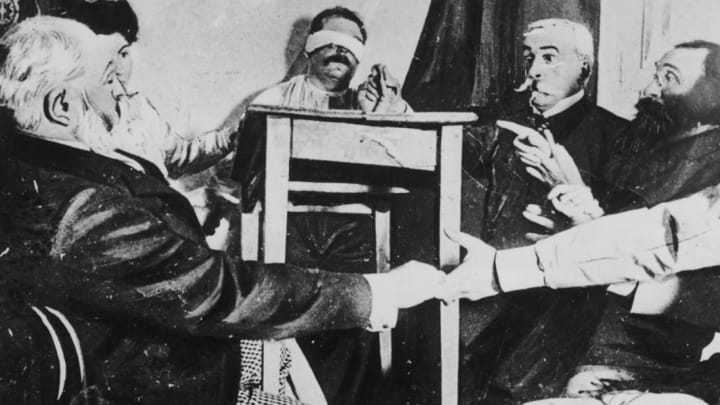6 Historical Methods for Contacting the Dead (and Their Drawbacks)

'Tis the season for getting in touch with the spirit realm. (This applies no matter what month we're in right now; 'tis always high time to get your séance on.) But there are several different ways you can go about it. Do you Ouija? Should you go wandering around a haunted house? No, you should probably pick up the psychic telephone.
Lapham's Quarterly helpfully charted out some of historical ways you could (supposedly) go about contacting the dead, from Chinese Fuji writing—a method that's kind of like a Ouija board, but using a stylus to make letters in sand instead of a board—to past-life regression via hypnosis. The chart lays out how each ghost-whispering concept works, and its theoretical drawbacks. Because there are always drawbacks.
Transfiguration, for instance, lets you see a spirit's face through the body of a medium, but that's a whole lot of hard work for your medium. You can listen for electronic voice phenomena via a recorder, but you have to buy the recorder first. F. R. Melton's 1921 invention, the balloon-powered psychic telephone, was a great option—except when his son George wasn't around to work it. And past-life regression, as you might imagine, holds “potential for new levels of self-hatred." No one wants to find out that their past self was a total jerk.
Means used to contact the deceased: https://t.co/yovXOsOuoS pic.twitter.com/1z68LEiJvJ
— Lapham’s Quarterly (@laphamsquart) October 29, 2017
There are plenty of scientific and cultural explanations for seeing ghosts that don't involve the actual spirits of the dead returning to the Earthly plane, but if you're into the history of the occult, this is a great primer on spirit-conjuring traditions.
[h/t Lapham's Quarterly]